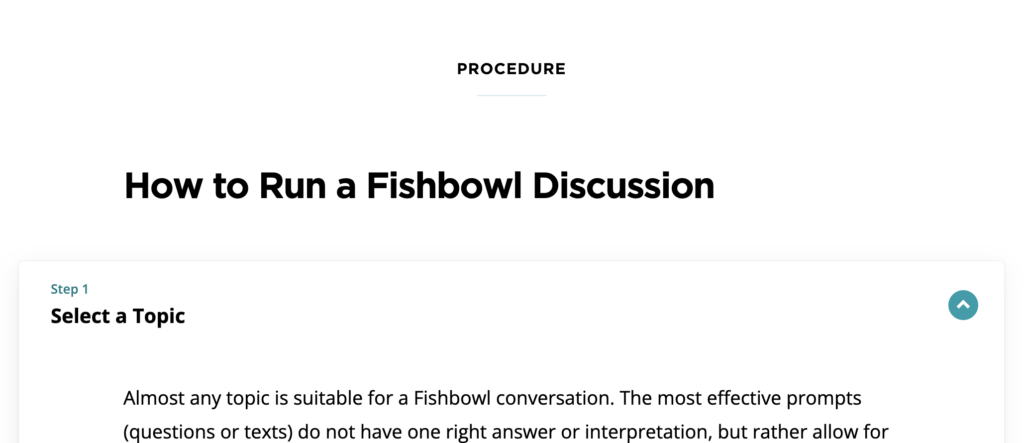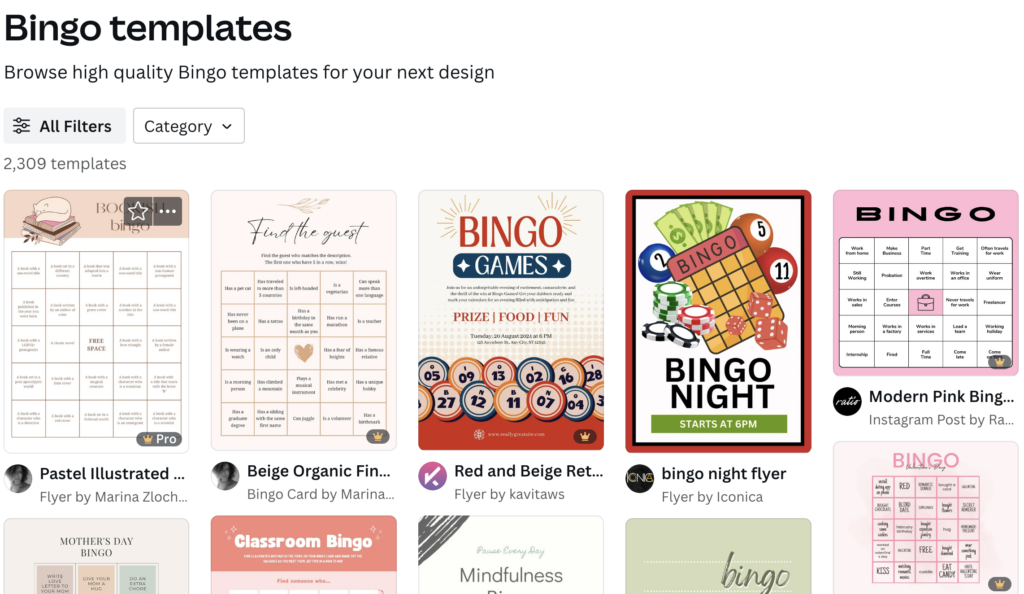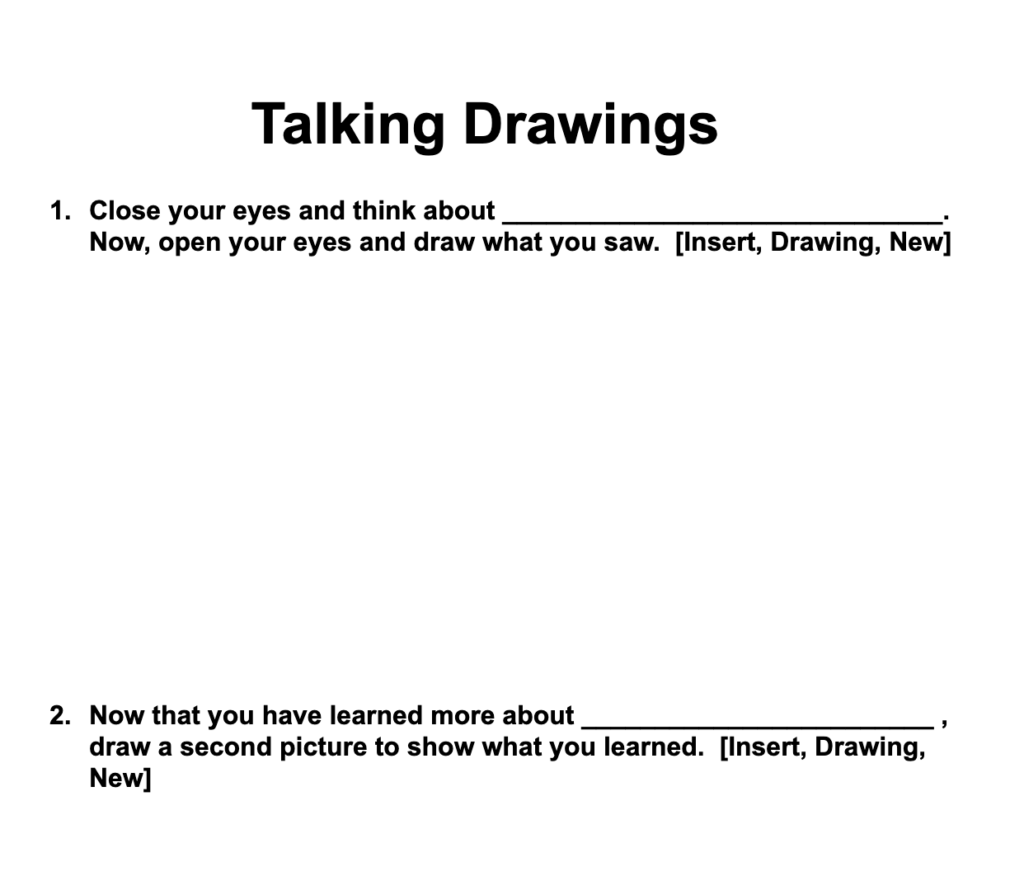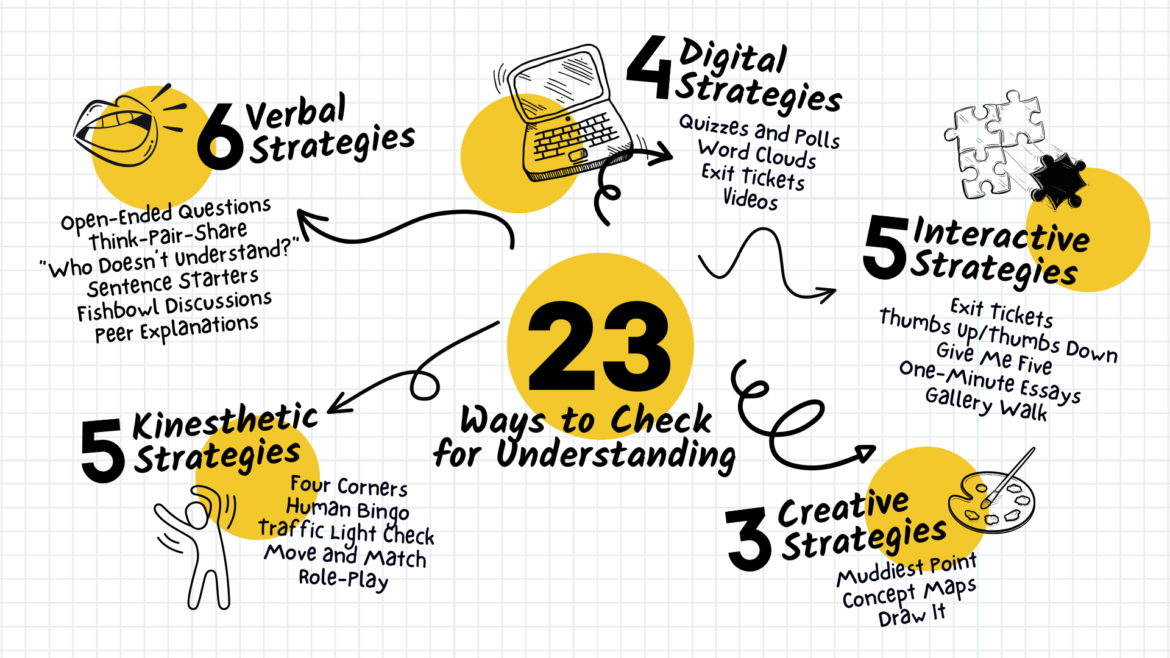As educators, we strive to ensure our students grasp the material we present. But how can we be sure our students are understanding the material? Checking for understanding throughout class is crucial for both teachers and students. It allows us to identify areas needing reinforcement, adapt our instruction in real time, and empower students to take ownership of their learning. Here are 23 strategies to gauge student understanding and keep your classroom buzzing with interactive learning.
Verbal Strategies
Open-Ended Questions
Instead of asking yes/no questions, ask questions that prompt students to explain concepts in their own words. For example, “Can you elaborate on the main idea?” or “How does this concept connect to what we learned yesterday?”
Think-Pair-Share
After doing a small bit of teaching, give your students a little time to think about a question related to the learning. This gives students time to formulate their thinking and process the information individually. Then, have each student turn to their neighbor and share their thoughts. Students should be encouraged to ask questions and give feedback to each other in the process. This not only fosters collaboration it also helps clarify understanding.
“Who doesn’t understand?”
When a student expresses confusion, ask if others feel the same. This normalizes asking for help and encourages open participation. It also shows students that it’s ok not to understand a concept.
Sentence Starters
Provide sentence starters like “In my own words, the key takeaway is…” or “I found it interesting that…” to guide student explanations.
Fishbowl Discussions

Arrange a small group of students in a circle for a fishbowl discussion while the rest observe. This will allow for a more focused assessment of participation and comprehension.
Peer Explanations
After explaining a concept, pair students up and have them explain the concept to each other. This reinforces understanding and identifies areas needing individual attention.
Interactive Strategies
Exit Tickets
Briefly ask students to summarize a key point, answer a question, or reflect on their learning at the end of class. This provides valuable insights into their comprehension.
Thumbs Up/Thumbs Down
Pose a true/false statement or ask a question. Then, have students use thumbs up/down to respond. Follow up with discussions for incorrect responses.
Give Me Five
Establish a scale (1 = not clear, 5 = crystal clear) and ask students to hold up their fingers to indicate their understanding level. This provides quick feedback and allows you to address common concerns.
One-Minute Essays
Give students a minute to write a quick lesson summary or answer a specific question. This assesses their ability to understand the information.
Gallery Walk
Have students create posters or short presentations on key concepts and post them around the class. Students then rotate and write down key takeaways gained from each other’s work.
Kinesthetic Strategies
Four Corners
Divide the room into sections representing different answers or options to a question. Have students go to the corner they agree with or are interested in. Students in each corner can then discuss their position or perspective. This will help reveal an understanding of the topic.
Human Bingo

Create bingo cards with learning objectives, questions, or tasks written in the squares. Have students rotate around the room and find peers to complete the tasks on the bingo cards. Once a peer has completed a task on the card, they can mark it off. For example, tasks might include finding someone who can name four colors, list the planets in the solar system, etc. This activity not only promotes active listening but is also a great way to check for understanding. Check out this sample ESL Human Bingo lesson by Teach This. In addition, if you are looking for an editable template, Canva has a lot of Bingo Card templates.
Traffic Light Check
Place red, yellow, and green cards around the room. Red can stand for “I’m confused” or “I need more help.” Yellow can stand for “I somewhat understand” or “I’m kind of getting it.” Green can stand for “It’s clear” or “I understood it.” Students can signal their understanding by moving to different cards around the room or placing clothespins on the appropriate card as demonstrated by Emma Willis.
Move and Match
Write key terms or concepts on cards and scatter them around the room. Students move and find the definition or example that matches each term, promoting movement and collaboration.
Role-Play
Assign students scenarios or situations related to the lesson. Then, ask your students to act them out. This will allow them to demonstrate their understanding through application.
Creative Strategies
Muddiest Point
Ask students to write down the part of the lesson they found most confusing (the “muddiest point”). This helps identify areas needing clarification.
Concept Maps
Have students create visual representations of the relationships between concepts and ideas they learned. This will help promote critical thinking and organization.
Draw It

Challenge students to draw a concept or process they learned. One way to do this is by incorporating Talking Drawings into your classroom. In addition, there are several online tools and applications that students can use, such as Google Canvas, AutoDraw, Google Drawings, or iPad apps.
Digital Strategies
Online Quizzes and Polls
Utilize online platforms to create quick quizzes or polls to assess comprehension and adjust instruction accordingly. There are many tools you can use, such as Poll Everywhere, Google Classroom, Quizizz, Quizlet, and more.
Word Clouds
Have students use online word clouds to collectively generate keywords or key ideas from the lesson. This will offer a visual representation of understanding. Mentimeter is a great tool for creating word clouds.
Digital Exit Tickets
Use online forms, such as Google Forms, for students to submit exit ticket responses. Getting the data back in a Google Sheet will make it easy to analyze the data.
Short Video Recordings
Allow students to record a short video recording. They can summarize key takeaways from the day’s lesson. Students can use Flip to record their videos.
Integrating various strategies to check for understanding will provide comprehensive knowledge of your students’ grasp of the material and keep the assessment process engaging and dynamic. Which strategies will you use? Have others to add to the list? Leave a comment to share with us!

